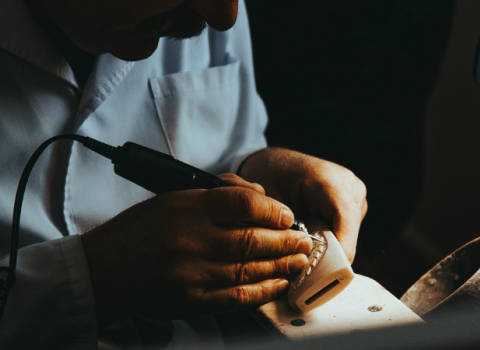Exactly 20 years after it was proposed, the first shared world class scientific facility in the Middle East is about to get up and running
The Sesame synchrotron opened its doors in Jordan this week, allowing scientists who would normally find it difficult to meet because of the troubled relations between their countries, to carry out collaborative research at a local facility.
The Synchrotron-light for Experimental Science and Applications in the Middle East, situated 35 kilometres north of the Jordanian capital Amman, unites Cyprus, Iran, Israel, the Palestinian Authority and Turkey – countries usually hostile to each other. The other founding members include Bahrain, Egypt and Jordan.
“Nobody thought it could happen until we tried. But we were surprised to find that people grew to the task,” said Roy Beck, a biophysicist at Tel Aviv University in Israel and a committee member of the Sesame users’ group. “As scientists we think there’s no problem we can’t solve; it’s our job,” he told Science|Business.
Sesame has experienced many tumultuous events on its way to life. Members of the Sesame consortium Cyprus and Turkey do not have diplomatic relations, nor do Iran and Israel.
Two Iranian scientists working on the institute were killed in car bomb attacks in 2009 and 2010, in what the Iranian government said were assassinations by the Israeli secret service. A freak snowstorm in 2013 caused the roof of Sesame’s building to cave in, while international banking sanctions prevented Iran from making payments to the centre at one point.
The whole enterprise required a mystifying level of patience and political skill which Beck says is hard to comprehend. “I’m not a politician, and I certainly don’t want to be one. I’m not sure how we pulled it off. I just know that science is a good way to join hands and that we are making bridges that are so badly needed,” he said.
It is a full 20 years since Gustave-Adolf Voss (1929 – 2013), a former director of Germany’s DESY synchrotron provided the inspiration for SESAME. In 1997 he suggested that rather than junking DESY’s Bessy-1 synchrotron, which was due to be replaced, it should be donated to the Middle East.
Following this proposal, the members of the SESAME were brought together under the auspices of UNESCO, and the project got under way in 2002.
Financial problems
Money may eventually surpass politics as Sesame’s biggest problem. Some $90 million has already gone into the project, but Jordan and Turkey are the only countries to have paid their annual and capital contributions in full. The EU has put in €5 million, but that was a difficult feat to pull off because at the time of the donation it was unclear which part of the EU budget the grant should come from.
As with CERN, Europe’s particle-physics lab, Sesame members pay dues based on the size of their economies for operating expenses.
Beck said it is vital to enlist more contributors. “One big pocket we’re missing is the Gulf countries. They have money like nobody else.” However, with Israel and Iran as members that is not likely.
Similarly, the US has declined to participate because of Iran’s membership. “It didn’t happen in Obama’s day – I don’t think it’s going to happen under Trump,” Beck said.
The institute has not received any private donations either but there is hope the project can tap the Bill and Melinda Gates Foundation. “I hope they will read our story, pull up their sleeves and reach into their pockets,” Beck said.
A bus ride away
There are about 60 such light sources in operation in 19 countries, almost all of them in the developed world. And said Beck, “They’re all over-booked.”
No longer having to hop on a plane to get to a synchrotron somewhere in Europe is expected to make a difference for science in the region. “I was able to take the bus in the morning from my home and was back in the evening to have dinner with my kids,” Beck said. “That’s a game-changer.”
Most light sources operate 20 or so beam lines, said Beck, but the lack of funding means that Sesame will start with just two (a third beam is planned for the end of the year). There have already been 55 bids from scientists to use the facility.
Unlike CERN, Sesame will not focus on fundamental physics. Its light source will be used in materials science to analyse structures from across biology, chemistry and engineering.
Beck said archaeologists have shown a particular interest in using Sesame’s beam lines – essentially extremely powerful microscopes – to analyse artefacts from the region. A treasured document in the region, the 2,000-year-old Dead Sea Scrolls, could be making a trip to the institute.
“We have the opportunity now to analyse the things that before you couldn’t transport easily somewhere else. You can’t put an [Egyptian] mummy on a plane, for instance,” said Beck.
Sesame’s governing council is chaired by a British physicist and former director of CERN, Chris Llewellyn Smith, who is stepping down to make way for another ex-head of CERN, Rolf-Dieter Heuer, confirmed as Sesame’s new president this week.
In addition to assembling and testing the magnets that will guide electrons around Sesame, scientists from CERN have trained staff and helped to commission the machine. CERN also oversaw technology transfer from Switzerland to Jordan, allowing components to be built in the Middle East.





 A unique international forum for public research organisations and companies to connect their external engagement with strategic interests around their R&D system.
A unique international forum for public research organisations and companies to connect their external engagement with strategic interests around their R&D system.